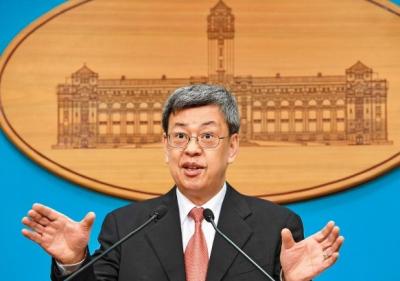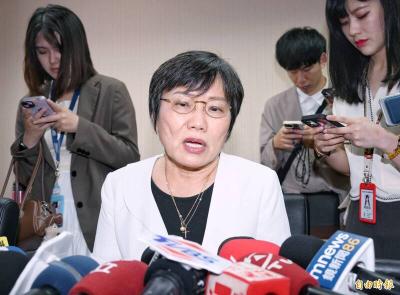Two US congressmen issued statements on Capitol Hill on Tuesday to mark the 65th anniversary of the 228 Massacre.
Representatives Robert Andrews, a Democrat, and Scott Garrett, a Republican, made a plea in the Congressional Record for their colleagues to join them in commemorating “this tragic chapter in Taiwan’s history.”
Andrews said that freedom was “not negotiable,” adding that he hoped the massacre would inspire Taiwanese “in their struggle for full independence, international participation and for the continued enhancement of the mutual relationship between Taiwan and the US.”
Garrett added that at least 18,000 people lost their lives during the 228 turmoil.
He said that over the next half-century, the Taiwanese democracy movement paved the way for Taiwan’s “momentous transformation from a dictatorship under the Chinese Nationalists [Party (KMT)] to a thriving and pluralistic democracy.”
Formosan Association for Public Affairs president Mark Kao (高龍榮) thanked the congressmen for their support and used the occasion to attack former premier Hau Pei-tsun (郝柏村) for alleging in an opinion piece in the Chinese-language United Daily News last week that “only” 500 people lost their lives in the massacre.
“It is outrageous that a former high government official still denies that the 228 Massacre took place,” Kao said. “It is equivalent to a denial of the Holocaust in World War II.”
He said President Ma Ying-jeou (馬英九) should condemn Hau’s remarks “in the strongest possible terms.”
“Ma needs to release the many documents that are still kept in the archives of the military and secret police agencies,” Kao said. “Taiwan’s free and open society needs to squarely face the horror of the atrocities committed 65 years ago. The truth and reconciliation process has just begun.”

Taiwan would welcome the return of Honduras as a diplomatic ally if its next president decides to make such a move, Minister of Foreign Affairs Lin Chia-lung (林佳龍) said yesterday. “Of course, we would welcome Honduras if they want to restore diplomatic ties with Taiwan after their elections,” Lin said at a meeting of the legislature’s Foreign Affairs and National Defense Committee, when asked to comment on statements made by two of the three Honduran presidential candidates during the presidential campaign in the Central American country. Taiwan is paying close attention to the region as a whole in the wake of a

President William Lai (賴清德) has appointed former vice president Chen Chien-jen (陳建仁) to attend the late Pope Francis’ funeral at the Vatican City on Saturday on his behalf, the Ministry of Foreign Affairs said today. The Holy See announced Francis’ funeral would take place on Saturday at 10am in St Peter’s Square. The ministry expressed condolences over Francis’ passing and said that Chen would represent Taiwan at the funeral and offer condolences in person. Taiwan and the Vatican have a long-standing and close diplomatic relationship, the ministry said. Both sides agreed to have Chen represent Taiwan at the funeral, given his Catholic identity and

Chinese Nationalist Party (KMT) Chairman Eric Chu (朱立倫), spokeswoman Yang Chih-yu (楊智伃) and Legislator Hsieh Lung-chieh (謝龍介) would be summoned by police for questioning for leading an illegal assembly on Thursday evening last week, Minister of the Interior Liu Shyh-fang (劉世芳) said today. The three KMT officials led an assembly outside the Taipei City Prosecutors’ Office, a restricted area where public assembly is not allowed, protesting the questioning of several KMT staff and searches of KMT headquarters and offices in a recall petition forgery case. Chu, Yang and Hsieh are all suspected of contravening the Assembly and Parade Act (集會遊行法) by holding

Lawmakers from the Democratic Progressive Party (DPP) yesterday established a friendship group with their counterparts in Ukraine to promote parliamentary exchanges between the two countries. A ceremony in Taipei for the Taiwan-Ukraine Parliamentary Friendship Association, initiated by DPP Legislator Chen Kuan-ting (陳冠廷), was attended by lawmakers and officials, including Deputy Minister of Foreign Affairs Francois Wu (吳志中) and European Economic and Trade Office in Taiwan Director Lutz Gullner. The increasingly dire situation in Ukraine is a global concern, and Taiwan cannot turn its back when the latter is in need of help, as the two countries share many common values and interests,